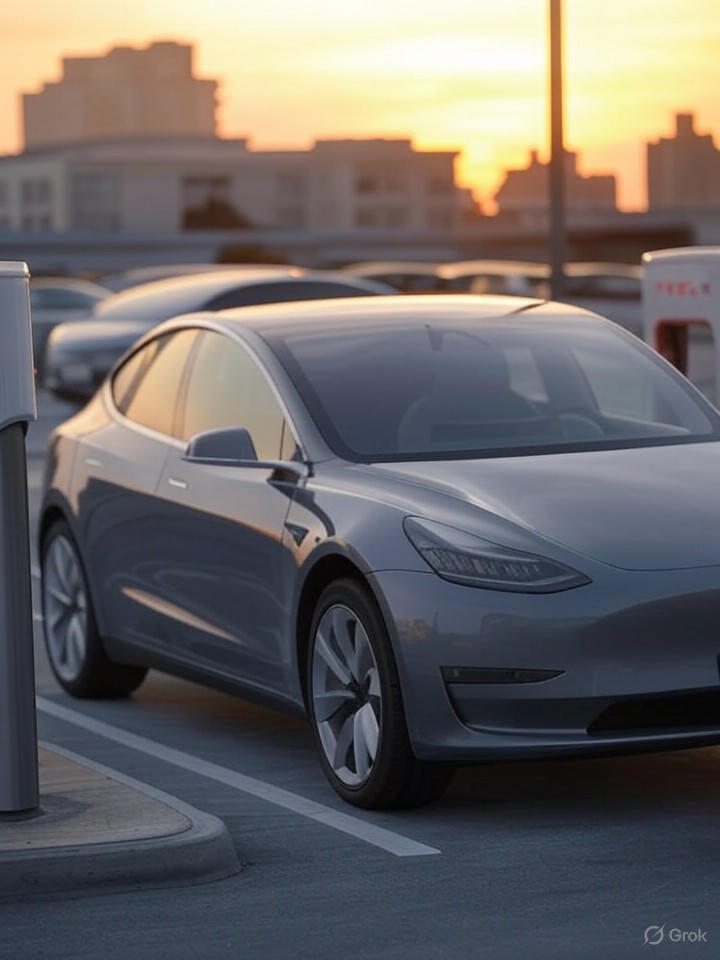In the fast-evolving world of electric vehicles, Tesla Inc. continues to set the benchmark for charging infrastructure, according to a recent J.D. Power study highlighted in the CBT Automotive Newscast on August 14, 2025. The report underscores Tesla’s dominance in customer satisfaction, with improvements in reliability offsetting lingering concerns over costs. This comes amid broader industry efforts to enhance EV adoption, where charging experiences remain a critical barrier for mainstream buyers.
Industry insiders note that Tesla’s Supercharger network, praised for its seamless integration and uptime, scored highest in the study, outpacing rivals like Electrify America and ChargePoint. However, the analysis also points to persistent pain points, such as higher session fees and inconsistent public charging availability, which could hinder EV growth if not addressed.
Tesla’s Charging Edge Amid Market Shifts
Recent posts on X from automotive analysts, including those from WardsAuto, echo this sentiment, emphasizing how Tesla’s infrastructure investments are paying off even as global EV sales growth slows. For instance, a WardsAuto update on August 13, 2025, reported that worldwide EV expansion is decelerating, putting pressure on automakers to innovate in user experience.
Meanwhile, Jaguar Land Rover faces a significant setback with a recall affecting over 121,500 vehicles in the U.S., as detailed in the same CBT Automotive Newscast. The issue stems from a suspension defect that could lead to loss of vehicle control, prompting urgent action from the National Highway Traffic Safety Administration.
Recall Ripples and Safety Imperatives
This recall, involving models like the Range Rover and Discovery, highlights ongoing quality challenges in luxury segments, where supply chain disruptions have compounded manufacturing woes. Sources from CBS News, in a March 2025 report on auto industry recalls, have previously warned of similar assembly faults, such as bent brake lines, underscoring a pattern of vulnerabilities exacerbated by global tariffs and material shortages.
Waymo, Alphabet Inc.’s autonomous vehicle unit, is pushing boundaries by testing its robotaxis in harsh Northeast winter conditions, per the August 14 CBT Newscast. This initiative aims to validate the technology’s resilience against snow, ice, and low visibility, potentially accelerating deployment in challenging climates.
Autonomous Advances in Adverse Weather
Insights from WIRED’s June 2025 coverage of China’s automotive dominance suggest that such innovations are crucial for Western firms to compete, as Asian rivals like Geely rapidly close the gap in EV and self-driving tech. X posts from Car Dealership Guy in February 2025 further predict a “stress test” for the EV market this year, with flat retail share projections at 9.1%, driven by shifting federal incentives and consumer hesitancy.
Adding to the industry’s headwinds, British vehicle exports to the U.S. have plummeted to a three-year low amid tariff uncertainties, as reported in the CBT Newscast. This decline, fueled by proposed duties on imports, threatens supply chains and profitability for European manufacturers.
Tariff Tensions and Export Declines
A South China Morning Post update from three weeks prior to August 15, 2025, details how global automotive trade is being reshaped by such policies, with Chinese automakers gaining ground despite barriers. Domestically, Ford’s $5 billion commitment to EV production, noted in an earlier CBT News segment on August 12, signals a counter-strategy, aiming for affordable models starting at $30,000 to capture market share.
These developments paint a picture of an automotive sector at a crossroads, balancing innovation with regulatory and economic pressures. General Motors’ revival of its autonomous program, as covered in the August 12 CBT Newscast, focuses on personal-use vehicles, potentially rivaling Waymo’s efforts. Yet, challenges like Toyota’s lowered profit forecasts due to U.S. tariffs, from the August 7 edition, remind stakeholders of the fragility ahead.
Strategic Alliances and Future Outlook
Collaborations, such as GM and Hyundai’s plan to co-develop five new vehicles announced on August 7 via CBT News, could foster resilience. X discussions from users like CA Vivek Khatri in June 2025 highlight India’s booming auto sector, projecting 26 million vehicle sales by 2030, driven by EVs and SUVs—a trend that might inspire global strategies.
As the industry navigates these dynamics, experts from Future Market Insights project the global automotive market to reach $7,822.1 billion by 2035, with a 5.6% CAGR, per their report four days ago. Passenger cars, expected to comprise 48% of sales, underscore the shift toward electrification and autonomy. However, posts on X from Darren Grimes in July 2025 warn of Britain’s car industry facing its worst year since 1952, with only 755,000 vehicles projected due to net-zero policies and high costs.
In this environment, Tesla’s charging leadership and Waymo’s testing milestones offer bright spots, but recalls and trade frictions demand vigilant oversight. Insiders anticipate that 2025’s slew of EV launches—over 50% of 36 new models, as noted by Car Dealership Guy on X in July 2024—will test supply-demand equilibria, potentially reshaping competitive hierarchies.




 WebProNews is an iEntry Publication
WebProNews is an iEntry Publication